Education Loan Forgiveness Programs: Pros and Cons
Education loan forgiveness programs have become a hot topic in recent years, as more and more individuals struggle with the burden of student loan debt. These programs offer the opportunity for borrowers to have a portion or all of their student loans forgiven, in exchange for meeting certain requirements or criteria. In this blog post, we will explore the pros and cons of education loan forgiveness programs, and discuss their impact on both borrowers and the economy as a whole.
Education Loan Forgiveness Programs
Education loan forgiveness programs are initiatives implemented by the government or private organizations, aimed at reducing the financial burden of student loan debt for eligible borrowers. These programs typically require borrowers to meet specific criteria, such as working in certain professions or in underserved areas, in order to qualify for loan forgiveness.
Pros of Education Loan Forgiveness Programs
Financial Relief
One of the main advantages of education loan forgiveness programs is the financial relief they provide to borrowers. Student loan debt can be a significant burden for many individuals, often taking years or even decades to pay off. By offering loan forgiveness options, borrowers are given the opportunity to have a portion or all of their debt wiped clean, allowing them to start their financial journey with a clean slate.
Stimulating Economic Growth
Education loan forgiveness programs can also have a positive impact on the economy as a whole. By reducing the burden of student loan debt, borrowers are more likely to have disposable income to spend on goods and services. This increased consumer spending can stimulate economic growth and contribute to the overall health of the economy.
Promoting Public Service Careers
Many education loan forgiveness programs focus on promoting careers in public service, such as teaching, nursing, or working in underserved communities. By providing loan forgiveness options for individuals working in these fields, the programs incentivize individuals to pursue careers that benefit society as a whole. This can lead to a stronger workforce in these critical areas and improve the overall quality of public services.
Cons of Education Loan Forgiveness Programs
Risk of Moral Hazard
One of the main concerns with education loan forgiveness programs is the risk of moral hazard. Critics argue that by forgiving student loan debt, the programs may encourage individuals to take on excessive debt without considering the long-term consequences. This could lead to a cycle of debt and forgiveness, ultimately burdening taxpayers and the economy.
Financial Impact on Government and Taxpayers
Another con of education loan forgiveness programs is the financial impact they have on the government and taxpayers. Loan forgiveness means that the government or private organizations are essentially absorbing the cost of the unpaid debt. This can result in a significant financial burden for the government and ultimately the taxpayers, who may have to bear the cost of the forgiven loans through increased taxes or reduced government funding in other areas.
Ineligibility of Certain Borrowers
While education loan forgiveness programs offer relief to many borrowers, they are not accessible to everyone. Some programs have strict eligibility criteria, such as requiring borrowers to work in specific professions or in designated underserved areas. This means that certain borrowers may not qualify for loan forgiveness, even if they are struggling with significant student loan debt. This can create a sense of inequality and frustration among borrowers who are unable to access these programs.
Conclusion
Education loan forgiveness programs have both pros and cons, and it is important to carefully consider these factors before making any decisions regarding student loan debt. While these programs offer much-needed financial relief to borrowers and can stimulate economic growth, they also come with potential risks such as moral hazard and financial burden on the government and taxpayers. It is crucial to examine the specific details and eligibility requirements of each program before making any decisions.
Exploring Other Alternatives to Traditional Education Funding
While education loan forgiveness programs may be a viable option for some borrowers, it is important to explore other alternatives to traditional education funding as well. Scholarships, grants, and work-study programs are all options that can help reduce the need for student loans in the first place. Additionally, individuals can consider refinancing their student loans or exploring income-driven repayment plans to make their monthly payments more manageable.
Resources
If you are interested in learning more about education loan forgiveness programs or exploring other options for managing your student loan debt, here are some resources you may find helpful:
- The Bank of America Student Loan Repayment Calculator: This tool can help you estimate your monthly payments and explore different repayment options.
- The Discover Student Loan Forgiveness Program: Discover offers a variety of loan forgiveness options for eligible borrowers. Visit their website for more information.
- The Wells Fargo Student Debt Relief Program: Wells Fargo provides resources and information on managing student loan debt. Visit their website for more details.
Remember, it is important to do your own research and carefully consider your options before making any decisions regarding your student loan debt.





No comments